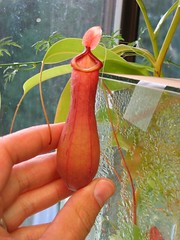
Nepenthes x coccinea
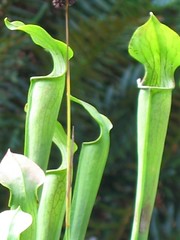
Sarracenia alata
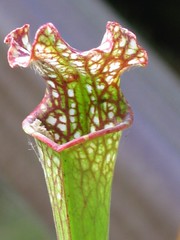
Sarracenia leucophylla
I have always been fascinated by flesh eating plants, ever since the day when, as a small boy, I proudly came home with a little Venus Fly Trap I had bought with my allowance money at the Canadian National Exhibition. While this first specimen soon died as a result of my misguided ministrations of greasy hamburger meat and hyper-chlorinated Toronto tap water, I was already hooked.
For the past few years, I have kept a collection of pitcher plants of the Sarracenia and Nepenthes varieties, which drown hapless insects in liquid filled leaf traps before eventually digesting them. This adaptation has evolved as a way to help them survive in bogs, which have poor soils but a plethora of nutritious bugs. In fact, rich soil will quickly kill most carnivorous plants. I cultivate mine in pots of sphagnum moss mixed with chunks of fir bark.
During late summer afternoons, I often notice flies and wasps flitting around the gaping mouths of my Sarracenias, which are growing in pots submerged in an old steel tub that stores rainwater from our roof.
Curious to see how efficient these plants are at catching bugs, I sliced open one of the larger pitchers of a Sarracenia alata to have a look. The results were astonishing. As you can see, the pitcher is packed full of insects in various states of digestion.
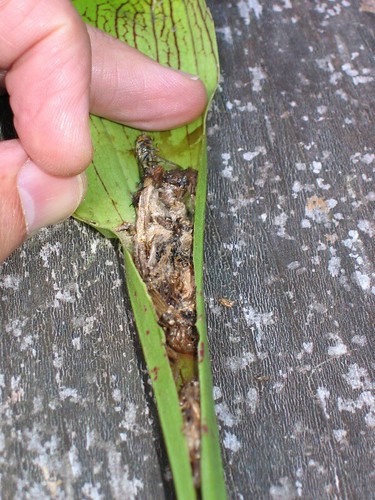
digested insects in pitcher
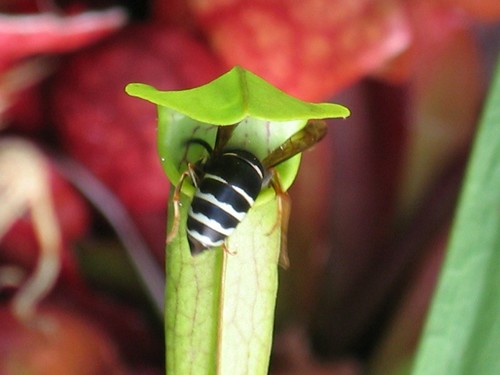
wasp entering
But how does the pitcher plant actually *digest* the prey that it captures? The truth, as it turns out, is complicated and interesting. The New Scientist recently ran an article describing how the closely related Sarracenia purpurea (which I also grow) contains an entirely self-contained aquatic ecosystem in the fluid at the bottom of its pitchers. Here mosquito larvae act as top level carnivores that consume the plant’s prey insects after they fall into the pitchers and drown. The larvae of these Wyeomyia mosquitos can exist only within these tiny pools of fluid and have never been found anywhere else. Bacteria, rotifers and protozoans then feed on the larvae’s leftovers (as well as being themselves eaten by the larvae) before *their* wastes in turn are absorbed by the plant as its food. These little ecologies are being used by scientists at the University of Vermont to develop computer models to help understand the effects of disturbances, such as habitat loss and climate change, on larger ecosystems
Thinking about these minuscule aquatic universes and the complex relationships between the organisms that spend their entire existences inside them, made me wonder about our own sense of the universe as “that which is knowable.” To the Wyeomyia larva, all reality is contained inside a pool of fluid at the bottom of a hollow leaf. Our own species has a much more expanded view of what we think is the universe— a space-time continuum, full of dark matter and outwardly expanding galaxies— yet clearly this entity must also be somehow contained. Will we ever encounter its perimeter?
Perhaps old Billy Blake said it best:
To see a World in a Grain of Sand.
And a Heaven in a Wild Flower.
Hold Infinity in the palm of your hand.
And Eternity in an hour.


